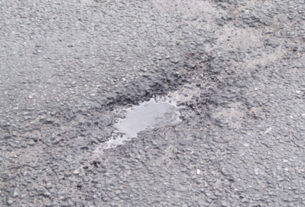With the New Year fast approaching, you may be considering resolutions for 2022 and given the most common resolutions are No.1: To get more exercise/improve fitness and No.2: To lose weight(1) it is likely that finding activities to achieve these resolutions will be high on your Google search list.
If the above sounds familiar, then you’ll be pleased to know you need look no further than this article to read how years of evidence has shown cycling is the perfect way to achieve both these resolutions (as well as many other benefits) and maintain them beyond January 2022.
Obesity and inactivity are a massive and growing problem with 25% of people aged over 16 doing less than 30 minutes of moderate physical activity (like brisk walking) a week(2). Physical inactivity (as defined above) increases with age and is also higher in most ethnic groups compared to the White British population(2).
The dangers of inactivity and the often-associated weight gain are well documented. In England, physical inactivity was identified as a cause in 37,000 preventable and premature deaths per annum amongst people aged 40-79(3).
The benefits of physical activity on almost every aspect of physical and mental health and the evidence base supporting this are too numerous to even go into in this article and for this reason physical activity/exercise is often termed ‘the perfect pill’ in healthcare. Physical activity has been consistently shown to be more powerful at improving physical and mental health than any other form of therapeutic intervention and comes with almost none of the downsides of these other things.
Recognised international guidance states that we should get at least 150 minutes of moderate physical activity a week(3); there is no recommendation on how this is achieved however, and this can be done as any activity which raises the heart rate and makes you breathe harder. Unfortunately in the UK around 40% of adults over 16 don’t meet this recommended amount(3).
Getting enough exercise, however, is not easy as few of us have the time, money or motivation to deal with the stresses of everyday life, with work, family life etc. and THEN come home and exercise in the little free time we have, and it is not surprising that the top 3 reasons for not exercising(4) are:
1) I’m too tired to exercise
2) I can’t afford a gym
3) I don’t have time in my day/I’m a busy parent
The above reasons rule out many exercise activities for a large number of people and this is where the importance of incidental exercise is being realised by many health policy makers and planners.
Incidental exercise is any activity that you do as part of your ‘normal’ daytime routine (such as walking to the train station) and don’t have to make special time for (like going to the gym after work). Given that incidental exercise takes no or minimal additional time out of a busy day and will often cost nothing or less than an activity it replaces (such as cycling to work, compared to driving).
This reduces many of the barriers to being active and evidence is mounting that incidental activity is much easier for people to maintain than adding in (and paying a hefty fee for) an extra activity like going to the gym, on top of everything else someone has to do.
Given the high barriers (cost, time) there are to staying active, the barriers to incidental activity are mainly in the design of towns and cities to facilitate active travel and nudge people out of their cars where possible and are therefore much easier to reduce on a public level.
Cycling is the perfect incidental activity for many reasons. Firstly, it allows users to travel much further than walking, which without public transport realistically limits users to a few miles’ radius around their house.
Secondly large population-based studies have shown that cycling as a mode of transport is associated with a lower risk of cardiovascular disease, cancer, and all-cause mortality, and may be a more beneficial form of commuting than walking(5.6).
To many people cycling, particularly cycle commuting in busy towns or cities, has the association of being incredibly dangerous but actually this idea is not supported by fact and when the benefits and risks are weighed up directly, the estimated health benefits of cycling are substantially larger than the health risks.
One study showed that if 500,000 people in the Netherlands swapped their car for a bicycle for short trips on a daily basis, 3-14 months of life would be gained as a result of increased physical activity levels, compared to the smaller harmful effects of inhaled air pollution (0.8-40 days lost) and increase in traffic accidents (5-9 days lost)(7).
A simpler and more often quoted figure is 20:1 (active life years gained by regular cycling vs life years lost though associated injury)(8).
In summary if you are looking to make a change this New Year and want to do something that is evidence based to help your physical and mental health, staying physically active is the most important thing you can do.
If you want that physical activity to be something that doesn’t require additional time or an expensive monthly fee and if you want this resolution to last beyond the end of January, then evidence shows that incidental exercise is the way to go.
Given that cycling has been shown to have additional benefits compared with walking as an exercise, building cycling into a daily or weekly routine as a way to commute or see friends or shop or just get out and about is the resolution you should be planning to make for January.
References:
- Which of the following New Years’ resolutions have you ever made – YouGov Poll 2019. https://www.statista.com/chart/20381/most-common-new-years-resolutions-gb/
- Physical actity – YouGov. https://www.ethnicity-facts-figures.service.gov.uk/health/diet-and-exercise/physical-inactivity/latest
- Cycling UK health statistics. https://www.cyclinguk.org/campaigning/views-and-briefings/health-and-cycling
- British Heart Foundation. https://www.bhf.org.uk/informationsupport/risk-factors/physical-inactivity
- The heart foundation. https://theheartfoundation.org/2018/06/01/the-top-10-excuses-for-not-exercising-and-solutions/
- Celis-Morales CA, Lyall DM, Welsh P, Anderson J, Steell L, Guo Y, et al. Association between active commuting and incident cardiovascular disease, cancer, and mortality: prospective cohort study. BMJ. 2017;357:j1456. doi: https://doi.org/10.1136/bmj.j1456.
- British Journal of Sports Medicine: Pedal power: The health benefits of cycling outweigh the risks (by far). https://blogs.bmj.com/bjsm/2018/12/12/pedal-power-the-health-benefits-of-cycling-outweigh-the-risks-by-far/
- Johan de Hartog J, Boogaard H, Nijland H, Hoek G. Do the health benefits of cycling outweigh the risks? Environ Health Perspect. 2010;118:1109-16. doi: https://doi.org/10.1289/ehp.0901747.



